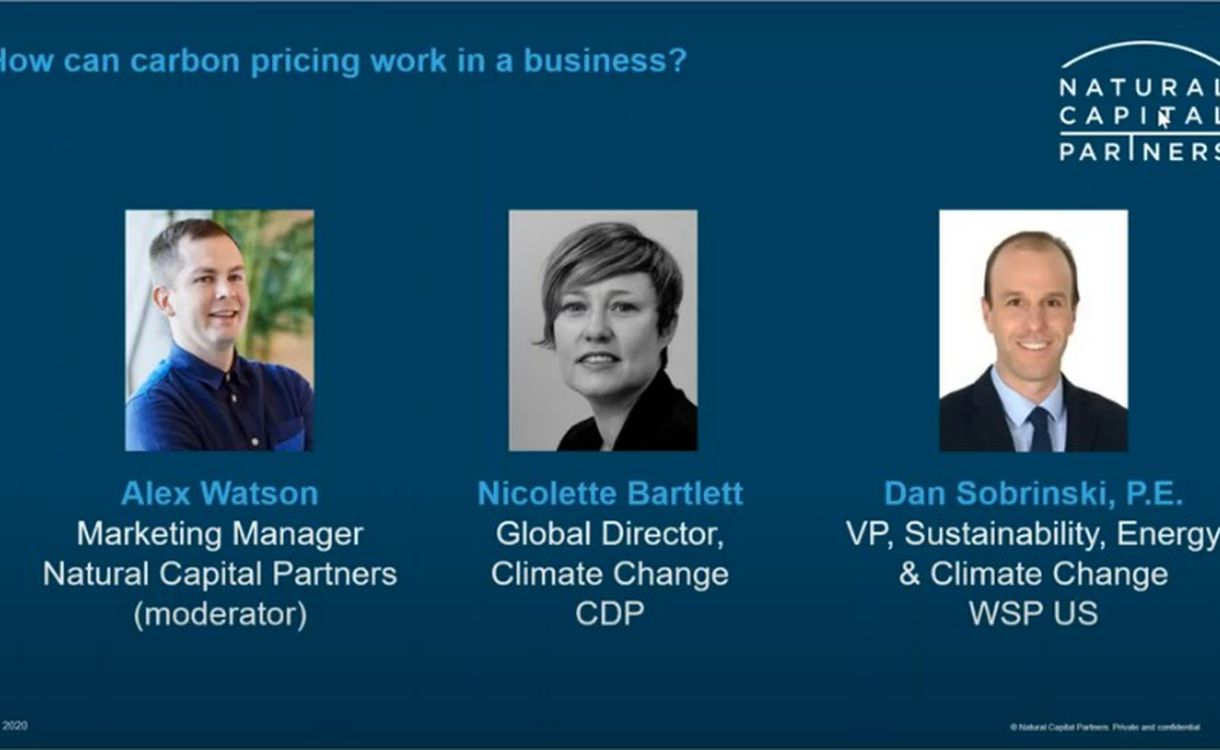Plan Vivo focuses exclusively on community-based land-use and forestry projects, making it a critical standard for land-owned initiatives. This specialization adds significant credibility and trustworthiness to projects certified under its framework.
Jonathan Shopley, Managing Director of External Affairs at Climate Impact Partners, evaluates the future of carbon pricing in a viral world.
In our initial article in this Climate Calculus series, I set out the argument that: “Net zero is not our end point—it’s the inflection point at which an abundance of affordable solutions replaces risk with opportunity”. The second examined how the immediacy of carbon neutrality complements longer-term commitments to net zero in driving progress to and beyond the inflection point. In this third article I turn to how we pay for the transition. Specifically, how a price on carbon finances the transition; and, the question on all our minds, what’s the right price for carbon?
Carbon pricing was brought into focus by the economist Sir Nicholas Stern with his widely quoted view that “Climate change is a result of the greatest market failure the world has seen”. The problem of climate change is that those who damage others by emitting greenhouse gases generally do not pay. Pricing greenhouse gas (GHG) emissions (aka putting a price on carbon) is a logical way to correct this glaring market failure by internalising the social and economic costs of GHG emissions.
Carbon offsetting is a mechanism for companies to put the pricing principle into practice by realising deep reduction targets on a voluntary basis ahead of or beyond regulation.
While the logic of putting a price on carbon is solid, it’s also complex. The opportunities to mitigate GHG emissions, and the costs of doing so, are unevenly spread around the world. Applying a social cost of carbon is one way of internalising the fully costed impact of the emission of one tonne of CO2e on society and the environment. It is most commonly used by governments when evaluating the impact of policies and large infrastructure projects.
In the private sector, a similar concept is the shadow price of carbon, which allows businesses to apply a hypothetical carbon price to investments and business decisions. This is used to future-proof the capital investment plans of a business against future regulatory requirements, such as carbon taxes and emissions cap-and-trade schemes. CDP research indicates a range of US$2 to US$900 across 416 companies using a shadow price of the 4,765 declaring their carbon pricing practices to the CDP in 2016. Despite the wide range, this is a critical first step in addressing climate risks in decision-making.
Carbon offsetting is a mechanism for companies to put the pricing principle into practice by realising deep reduction targets on a voluntary basis, ahead of or beyond regulation. Most do so to reach and claim carbon neutrality as an immediate response to climate risks and to contribute to the longer-term goal of a net zero economy. The value of this approach derives from the fact that carbon offsetting is a powerful driver of change for two reasons:
- The price of carbon finances mitigation. Finance raised from the initial sale of emission reductions goes to the projects and programmes that deliver the reductions. Voluntary offsetting has raised over US$5bn during the past 15 years.
- The carbon price drives emission reductions. It provides a tangible signal that helps answer the difficult question businesses face when using offsets as part of a carbon management strategy—how to find the right balance between internal abatement and external emission reductions. Internal abatement makes business sense when that can be done below the market price of carbon. The price of carbon credits provides an informed yardstick.
Businesses ready to deliver on their carbon neutral and net zero commitments by combining shadow pricing with carbon offsetting already can benefit from an array of mitigation opportunities at different price points. Recent prices in the voluntary carbon market range widely from below US$1 to US$125, with a weighted average of around US$5 per tCO2e.
A portfolio approach to selecting and combining internal and external mitigation options can drive the abundance of affordable solutions that lies beyond the inflection point of net zero. This would include cost-effective credits from highly additional projects (such as grid connected renewable energy in developing economies) solely focused on mitigation as well as higher cost credits from mitigation projects that deliver a host of co-benefits to local communities and ecosystems (for example, rural household biogas or solar electrification projects).
Credits from as-yet rare, innovative engineered solutions (for example, air carbon capture and storage) will be painfully expensive until the economies of scale and learning kick-in. However, their inclusion in the mix sends a critical market signal that will drive their costs down in the future.
We know that there are emission reductions opportunities for less than a U.S. dollar per tCO2e, and that prices over $100 per tCO2e would drive rapid decarbonization across the economy. Civil society organisations and progressive governments will favor high prices over low within reason. Across the private sector, businesses looking to maintain and strengthen their competitive position through their voluntary action on climate will be seeking a price that delivers business value and environmental impact.
We can expect an increase in the average price of carbon by tonne, in both voluntary and regulated markets, over time. Ideally, this will be a steady trajectory, but we must also anticipate some volatility along the way. A business can hedge against this with a diversified portfolio of climate mitigation solutions.
The real power of carbon pricing comes into focus when we examine its impact through the ‘climate calculus’ lens. What drives change is finance, and Finance = Price x Volume. As more businesses adopt carbon pricing, they are financing projects and programmes to deliver a stable climate and promote sustainable development.

How can carbon pricing work in a business?
Watch our webinar
- Webinar | Where CarbonNeutral® Certification Sits in Corporate Sustainability Strategies
- Webinar | The Calculus of Climate Change in a Viral World: Is it Time to Recalibrate?
- Climate Calculus Series: What’s the Right Price for Carbon?
- Climate Calculus Series: The Calculus of Climate Change in a Viral World?
Latest News

COP30:Coalition to Grow Carbon Markets Launches Shared Principles
The Coalition to Grow Carbon Markets has launched it Shared Principles on the use of high integriity carbon credits.
Read more
Farmer-led carbon reduction project to transform rural livelihoods for 240,000 Zambians
A new community-led carbon initiative has launched in Zambia which is set to remove up to 2 million tonnes of CO₂ annually by 2030.
Read more
Climate Impact Partners Named Best Offset Retailer for 13th Time in Largest-Ever Environmental Finance Voluntary Carbon Market Awards
Recognition underscores Climate Impact Partners’ leadership in the carbon markets and partnership-first approach to delivering high-integrity climate impact.
Read moreThe Latest Insights From
Climate Impact Partners

Building Trust Through Measurable Climate Impact: An In-Depth Q&A with Sil from Climate Lab
Climate action isn’t just about reducing emissions, it’s about creating solutions that deliver measurable benefits for people and the planet.
Read more
SBTi launches second public consultation of its Corporate Net-Zero Standard V2
Climate Impact Partners outlines the key updates as the SBTi launches its second public consultation of its Corporate Net Zero standard V2.
Read more
The Carbon Footprint of AI
AI is transforming our world—but understanding its hidden carbon footprint is key to building a smarter, greener future.
Read more













